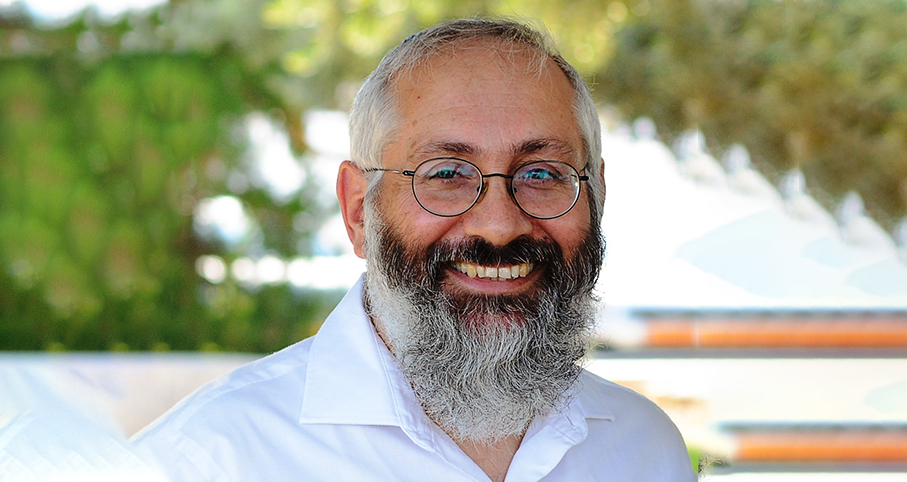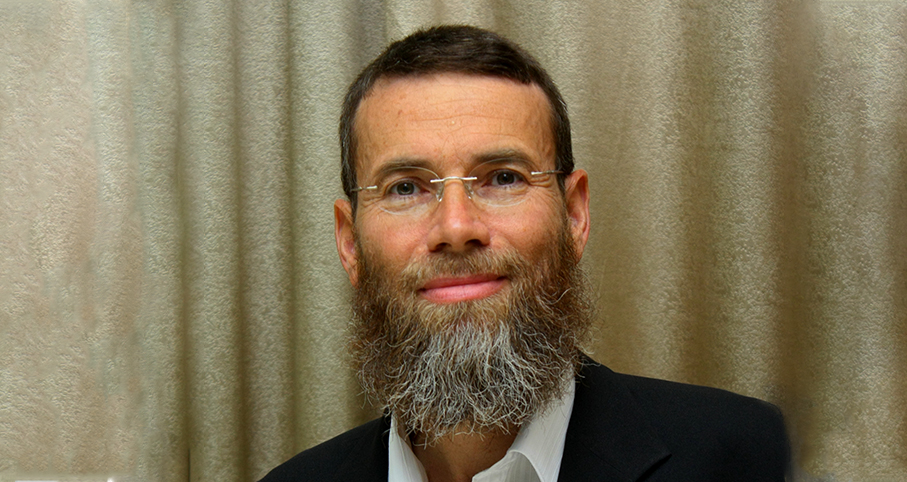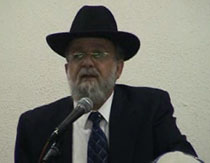Beit Midrash
- Jewish Laws and Thoughts
- Prayer
- The Reading of the Torah
The audience waited patiently for the guest speaker from America who never arrived, notwithstanding that he had marked it carefully on his calendar and was planning to be there. What went wrong?
Question #2: The Missing Reading
"I will be traveling to Eretz Yisroel this spring, and will miss one of the parshios. Can I make up the missing kerias haTorah?"
Question #3: The Missing Parshah
"I will be traveling from Eretz Yisroel to the United States after Pesach. Do I need to review the parshah twice?"
Question #4: The Missing Aliyah
"May I accept an aliyah for a parshah that is not the one I will be reading on Shabbos?"
Introduction:
The Jerusalem audience is waiting for the special guest speaker. The scheduled time comes and goes, and the organizer is also wondering why the speaker did not apprise him of a delay. Finally, he begins making phone calls and discovers that the speaker -- is still in Brooklyn!
What happened? Well… arrangements had been made for the speaker to speak on Wednesday of parshas Balak. Both sides confirmed the date on their calendars -- but neither side realized that they were not talking about the same date!
This year we have a very interesting phenomenon that affects baalei keri’ah, calendar makers, those travelling to or from Eretz Yisroel, and authors whose articles are published in Torah publications worldwide. When Acharon shel Pesach falls on Shabbos in a leap year, there is a difference in the weekly Torah reading between what is read in Eretz Yisroel and what is read in chutz la’aretz – for a very long period of time – over three months – until the Shabbos of Matos/Masei, during the Three Weeks and immediately before Shabbos Chazon. Although Acharon shel Pesach falls on Shabbos fairly frequently, most of the time this is in a common year, and the difference between the observances of chutz la’aretz and of Eretz Yisroel last for only a few weeks.
Why the different reading?
When the Eighth Day of Pesach, Acharon shel Pesach, falls on Shabbos, the Jews of chutz la’aretz, where this day is Yom Tov, read a special Torah reading in honor of Yom Tov that begins with the words Aseir te'aseir. In Eretz Yisroel, where Pesach is only seven days long, this Shabbos is after Pesach (although the house is still chometz-free), and the reading is parshas Acharei Mos, which is usually the first reading after Pesach in a leap year (Shulchan Aruch, Orach Chayim 428:4). On the subsequent Shabbos, the Jews of Eretz Yisroel already read parshas Kedoshim, whereas outside Eretz Yisroel the reading is parshas Acharei Mos, since for them it is the first Shabbos after Pesach. Until mid-summer, chutz la’aretz will consistently be a week "behind" Eretz Yisroel. Thus, this year in Eretz Yisroel, the Wednesday of parshas Behar is the 10thof Iyar or May 11th. However, in chutz la’aretz, the Wednesday of parshas Behar is a week later, on the 17thof Iyar or May 18th.
This phenomenon, whereby the readings of Eretz Yisroel and chutz la’aretz are a week apart, continues until the Shabbos that falls on July 30th. On that Shabbos, in chutz la’aretz, parshios Matos and Masei are read together, whereas in Eretz Yisroel that week is parshas Masei, parshas Matos having been read the Shabbos before.
The ramifications of these practices affect not only speakers missing their engagements, and writers, such as myself, who live in Eretz Yisroel but write parshah columns that are published in chutz la’aretz. Anyone traveling to Eretz Yisroel during these three months will miss a parshah on his trip there, and anyone traveling from Eretz Yisroel to chutz la’aretz will hear the same parshah on two consecutive Shabbosos. Those from Eretz Yisroel who spend Pesach in chutz la’aretz will find that they have missed a parshah. Unless, of course, they decide to stay in Eretz Yisroel until the Nine Days. But this latter solution will not help someone who is living temporarily in Eretz Yisroel and therefore observing two days of Yom Tov. Assuming that he attends a chutz la’aretz minyan on Acharon shel Pesach, he will miss hearing parshas Acharei.
Several halachic questions result from this phenomenon. Is a traveler or someone who attended a chutz la’aretz minyan on Acharon shel Pesach required to make up the missed parshah, and, if so, how? During which week does he review the parshah shenayim mikra ve'echad Targum? If he will be hearing a repeated parshah, is he required to review the parshah again on the consecutive week? Can he receive an aliyah or "lein" on a Torah reading that is not "his" parshah? These are some of the questions that result from this occurrence.
Why doesn't chutz la’aretz catch up earlier?
But first, let us understand why this phenomenon lasts for such a long time! After all, there are numerous weeks when chutz la’aretz could "double up" two parshios and thereby "catch up" to Eretz Yisroel. Why don’t they double up Acharei Mos/Kedoshim the week after Pesach, or Behar/Bechukosei, which is only a few weeks later, rather than reading five weeks of sefer Vayikra and virtually all of sefer Bamidbar, before straightening out the problem?
Even more, when Shavuos falls on Friday in Eretz Yisroel, or on Friday and Shabbos in chutz la’aretz in a common year. When this happens in a leap year, in chutz la’aretz the parshios of Chukas and Balak are combined in order to "catch up." Why not follow the same procedure when acharon shel Pesach falls on Shabbos, instead of waiting until Matos/Masei.
As you can imagine, we are not the first to raise these questions. They are discussed by one of the great sixteenth-century halachic authorities, the Maharit (Shu"t Maharit, Volume II, Orach Chayim #4). He answers that the reason why chutz la’aretz does not double the parshah earlier is because this would make Shavuos fall earlier than it should. Ideally, Shavuos should be observed between Bamidbar and Naso, and combining either Acharei Mos with Kedoshim, or Behar with Bechokosai pushes Shavuos until after parshas Naso.
Shavuos after Bamidbar
Why should Shavuos be after Bamidbar? The Gemara establishes certain rules how the parshios should be spaced through the year. Ezra decreed that the Jews should read the curses of the tochacha in Vayikra before Shavuos and those of Devarim before Rosh Hashanah. Why? In order to end the year together with its curses! [The Gemara then comments:] We well understand why we read the tochacha of Devarim before Rosh Hashanah, because the year is ending, but why is that of Vayikra read before Shavuos? Is Shavuos the beginning of a year? Yes, Shavuos is the beginning of a new year, as the Mishnah explains that the world is judged on Shavuos for its fruit" (Megillah 31b).
We see from this Gemara that we must space out our parshios so that we read from the beginning of Bereishis, which we begin on Simchas Torah, until parshas Bechukosai at the end of Vayikra before Shavuos. We then space our parshios so that we complete the second tochacha in parshas Ki Savo before Rosh Hashanah.
One week or two?
However, this Gemara does not seem to explain our practice. Neither of these parshios, Bechukosai or Ki Savo, is ever read immediately before Shavuos or Rosh Hashanah. There is always at least one other Shabbos wedged between. This practice is already noted by Tosafos (Megillah 31b s.v. Kelalos). The Levush (Orach Chayim 428:4) explains that, without the intervening Shabbos as a shield, the Satan could use the tochacha as a means of accusing us on the judgment day. The intervening Shabbos, when we read a different parshah, prevents the Satan from his attempt at prosecuting, and, as a result, we can declare: End the year together with its curses!
The Maharit explains that not only should we have one intervening Shabbos between the reading of the tochacha and the judgment day, we should preferably have only one Shabbos between the two. That is why chutz la’aretz postpones doubling a parshah until after Shavuos. (Indeed, parshas Naso is read in Eretz Yisroel before Shavuos in these years, but that is because there is no better option. In chutz la’aretz, since one can have the readings occur on the preferred weeks, Shavuos is observed on its optimal Shabbos reading.)
Why not Chukas/Balak?
However, the Maharit notes that this does not explain why the parshios of Chukas and Balak are not combined, although he notes that, in his day, some communities indeed did read the two together when Acharon shel Pesach fell on Shabbos. The Syrian communities followed this practice and in these years combined parshios Chukas and Balak together, and read Matos and Masei on separate weeks. There is no Jewish community in Syria anymore today that reads kerias haTorah according to this custom – for that matter, there is, unfortunately, no longer any Jewish community in Syria that reads kerias haTorah according to any custom. I am under the impression that the communities of Aleppo Jews currently living in Flatbush and in Deal, New Jersey, although they strictly follow the customs that they have practiced for centuries, do not follow this approach. I am not familiar with the custom of other Syrian communities.
To explain the common custom that does not combine the parshios of Chukas and Balak, the Maharit concludes that once most of the summer has passed and the difference is only what to read on three Shabbosos, we combine Matos with Masei which are usually combined, rather than Chukas and Balak, which are usually separate. The two parshios, Matos and Masei, are almost always read together, and are separated only when the year requires an extra Shabbos reading, as it does this year in Eretz Yisroel. Truthfully, we should view Matos and Masei as one long parshah (making the combination the largest parshah in the Torah) that occasionally needs to be divided, rather than as two parshios that are usually combined.
The Maharit explains further that combining the parshios of Matos and Masei emphasizes that the reading for Shabbos Chazon should be parshas Devorim and for Shabbos Nachamu should be parshas Va’eschanan. This is important, because parshas Va’eschanan includes the section of the Torah that begins with the words Ki solid banim… venoshantem, which includes an allusion to the fact that Hashem brought about the churban two years early, in order to guarantee that klal Yisroel would return to Eretz Yisroel. Since this is part of the post-Tisha Be’Av consolation, it is appropriate that people see that our reading was doubled just now, for the sake of making these readings fall on the proper Shabbosos.
One could also explain this phenomenon more simply: Matos and Masei are read on separate weeks only when there simply are otherwise not enough readings for every Shabbos of the year.
In these occasional years when Matos and Masei are read separately, parshas Pinchas falls out before the Three Weeks -- and we actually get to read the haftarah that is printed in the chumashim for parshas Pinchas, Ve'yad Hashem, from the book of Melachim. In all other years, parshas Pinchas is the first Shabbos of the Three Weeks, and the haftarah is Divrei Yirmiyahu, the opening words of the book of Yirmiyahu, which is appropriate to the season. The printers of chumashim usually elect to print Divrei Yirmiyahu as if it is the haftarah for parshas Matos, and then instruct you to read it, on most years, instead as the haftarah for Pinchas. What is more logical is to label this haftarah as the one appropriate for the first of the Three Weeks, and to print both after Pinchas. The instructions should read that on the occasional year when Pinchas falls before the 17thof Tamuz, they should read Ve'yad Hashem, and when Pinchas falls on or after the 17thof Tamuz, they should read Divrei Yirmiyahu. A note after parshas Matos should explain that when this parsha is read alone, they should read the second haftarah printed after parshas Pinchas. But, then, the printers do not usually consult with me what to do, electing instead to mimic what previous printers have done. This phenomenon affects practical halachah, but that is a topic for a different time. However, the printers’ insistence to call Ve'yad Hashem the "regular" haftarah for parshas Pinchas has lead to interesting questions.
This article is continued here
This Shiur is published also at Rabbi Kaganof's site

An Oleh Who Wants to Lain His Aliya
Rabbi Daniel Mann | Tammuz 5783

What Do We Do When No Kohen Is Present for Torah Reading?
Rabbi Stewart Weiss | Iyar 2 5782

Taking Out the Sefer Torah
Rabbi Yirmiyohu Kaganoff | Adar I 5782























